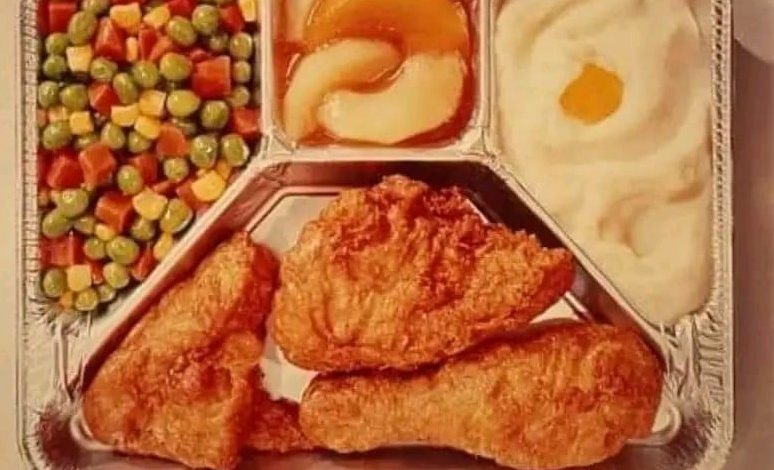TV Dinners: The Iconic American Convenience Meal

ADVERTISEMENT
TV Dinners: The Iconic American Convenience Meal
The TV dinner is a quintessential symbol of mid-20th century America, representing not only a culinary innovation but also a shift in societal habits and lifestyle. These pre-packaged, ready-to-eat meals, typically consisting of meat, vegetables, and a dessert, were designed for convenience, allowing families to enjoy a hot meal without the time or effort required to cook from scratch. As television became a central part of American life, TV dinners provided the perfect accompaniment, giving rise to a new era of convenience dining.
The Birth of the TV Dinner
The concept of the TV dinner was first introduced in the United States in 1953 by the Swanson company, although similar products had existed before under different names. The story goes that Swanson had a surplus of frozen turkeys after Thanksgiving, and the company’s salesmen, Gerry Thomas, is credited with coming up with the idea to package turkey with sides of cornbread stuffing, peas, and sweet potatoes in a compartmentalized aluminum tray. The meal could be heated in the oven and eaten directly from the tray, making it an easy and convenient option for busy families.
Swanson’s TV dinner was marketed as a product that allowed families to enjoy a complete meal while watching their favorite television programs. The idea resonated with the post-war American public, and the product quickly became a cultural phenomenon. The first Swanson TV dinner sold for 98 cents and included turkey, cornbread stuffing, peas, and sweet potatoes. It was a hit, selling more than 10 million units in its first year.
The Evolution of the TV Dinner
Over the years, TV dinners evolved to include a wide variety of meals. Initially focused on traditional American comfort foods like fried chicken, meatloaf, and Salisbury steak, TV dinners soon expanded to offer international flavors such as Italian pasta dishes and Mexican enchiladas. The packaging also improved, with aluminum trays eventually giving way to microwavable plastic containers as microwave ovens became more common in American homes.
The 1970s and 1980s saw further innovation in the frozen meal industry, with companies like Stouffer’s, Banquet, and Lean Cuisine entering the market. These brands offered more upscale or health-conscious options, appealing to a broader audience. TV dinners were no longer just a convenience food; they became a reflection of changing consumer preferences and dietary trends.
ADVERTISEMENT
The introduction of microwavable dinners was a significant milestone in the evolution of TV dinners. As microwave ovens became standard in kitchens across America, the ability to prepare a hot meal in just a few minutes added another layer of convenience. The classic TV dinner was now ready in a fraction of the time it took to cook a meal from scratch, solidifying its place in American culture.
The Cultural Impact of TV Dinners
TV dinners were more than just a meal; they were a reflection of the changing dynamics of American society. The 1950s and 1960s were a time of rapid technological advancement, suburban growth, and a rising middle class. The introduction of television into the home altered family dynamics, with many families gathering around the TV to watch programs together during dinner.
TV dinners fit perfectly into this new way of life. They offered a quick and easy solution for busy households, allowing families to enjoy dinner with minimal preparation and cleanup. The compartmentalized tray became an iconic image, symbolizing the convenience and modernity of the post-war era.
However, the rise of TV dinners also sparked debates about the quality of food and the decline of traditional family meals. Critics argued that TV dinners promoted unhealthy eating habits, with meals that were often high in sodium, fat, and preservatives. Additionally, some lamented the loss of the family dinner table as the center of home life, replaced by the television set.
Despite these criticisms, TV dinners remained popular, adapting to changing tastes and dietary preferences over the decades. Today, the frozen meal industry is a multi-billion-dollar business, with TV dinners representing just one segment of a diverse market that includes everything from gourmet meals to vegetarian and gluten-free options.
ADVERTISEMENT
TV Dinners in Modern Times
While the classic TV dinner may not be as dominant as it once was, it still holds a nostalgic place in American culture. Many people who grew up in the 1950s, 60s, and 70s remember TV dinners as a special treat or a convenient solution for busy nights. The image of a TV dinner on a tray, with its neat compartments of food, evokes memories of simpler times and the novelty of early television.
In recent years, there has been a resurgence of interest in retro foods, including TV dinners. Some companies have even released limited-edition TV dinners that replicate the original Swanson meals, complete with vintage packaging. These products appeal to both nostalgic consumers and a younger generation interested in the history of American cuisine.
The TV dinner also paved the way for the convenience food industry as a whole. The principles of easy preparation, portion control, and long shelf life that made TV dinners popular are still driving forces in the food industry today. Modern frozen meals may offer more variety and healthier options, but they owe much of their existence to the humble TV dinner.
Conclusion
The TV dinner is a cultural icon that reflects the changing dynamics of American life over the past several decades. From its origins as a convenient meal for busy post-war families to its place in the modern frozen food aisle, the TV dinner has left an indelible mark on American cuisine and culture.
While the way we eat has evolved, the legacy of the TV dinner lives on in the convenience foods we rely on today. Whether you view them with nostalgia or as a symbol of changing times, TV dinners are a fascinating chapter in the history of food, representing innovation, convenience, and the American way of life.
ADVERTISEMENT




